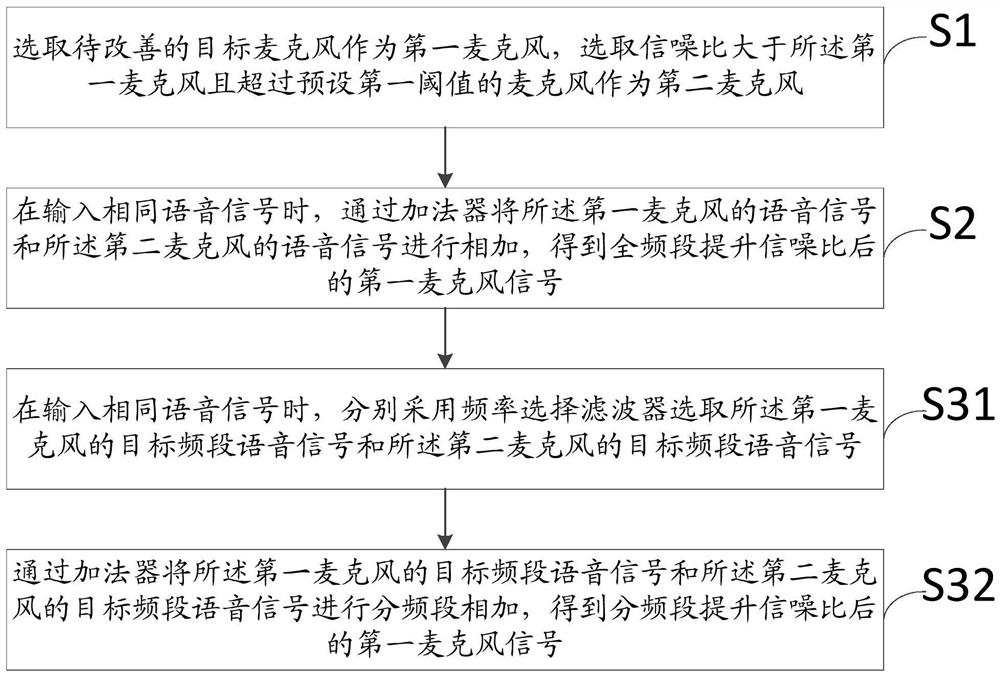Method and device for improving signal-to-noise ratio of microphone signal
A microphone signal and microphone technology, applied in the field of signal processing, can solve the problem of low signal-to-noise ratio of the microphone, achieve good sound quality and improve the effect of signal-to-noise ratio
- Summary
- Abstract
- Description
- Claims
- Application Information
AI Technical Summary
Problems solved by technology
Method used
Image
Examples
no. 1 example
[0045] see Figure 1-3 .
[0046] Such as figure 1 As shown, this embodiment provides a method for improving the signal-to-noise ratio of a microphone signal, at least including the following steps:
[0047] S1. Select a target microphone to be improved as a first microphone, and select a microphone with a signal-to-noise ratio greater than the first microphone and a preset first threshold as a second microphone.
[0048]Specifically, for step S1, the MIC A to be improved is selected, and its output signal Sa and output noise Na are generally irreplaceable to a certain extent. Select a MIC B to add to MIC A, so as to improve the SNR of MIC A. It should be noted that the SNR of MIC B is much higher than that of MIC A, and generally the threshold is about 20 dB or more; at the same time, MICB is generally more common and cheap.
[0049] S2. When the same voice signal is input, add the voice signal of the first microphone and the voice signal of the second microphone through ...
no. 2 example
[0078] see Figure 4-5 .
[0079] Such as Figure 4 As shown, the present embodiment provides a device for improving the signal-to-noise ratio of the microphone signal, including:
[0080] The microphone selection module 100 is configured to select a target microphone to be improved as a first microphone, and select a microphone with a signal-to-noise ratio greater than the first microphone and a preset first threshold as a second microphone.
[0081] The full-band signal-to-noise ratio improvement module 200 is used to add the voice signal of the first microphone and the voice signal of the second microphone through an adder when the same voice signal is input, so as to obtain a full-band boost signal-to-noise ratio after the first microphone signal.
[0082] In a preferred embodiment, such as Figure 4 As shown, the device for improving the signal-to-noise ratio of the microphone signal also includes:
[0083]The sub-frequency band improves the signal-to-noise ratio mod...
PUM
 Login to View More
Login to View More Abstract
Description
Claims
Application Information
 Login to View More
Login to View More - R&D
- Intellectual Property
- Life Sciences
- Materials
- Tech Scout
- Unparalleled Data Quality
- Higher Quality Content
- 60% Fewer Hallucinations
Browse by: Latest US Patents, China's latest patents, Technical Efficacy Thesaurus, Application Domain, Technology Topic, Popular Technical Reports.
© 2025 PatSnap. All rights reserved.Legal|Privacy policy|Modern Slavery Act Transparency Statement|Sitemap|About US| Contact US: help@patsnap.com



